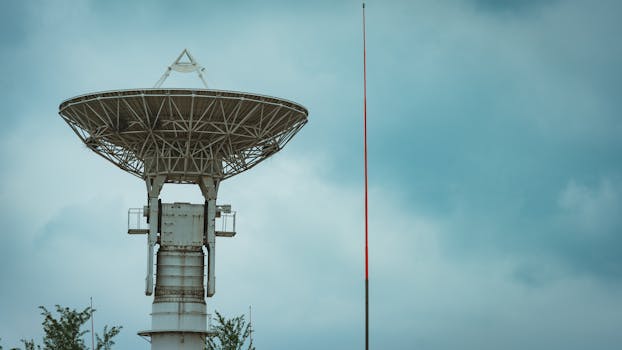
Satellites as Sentries: Advanced Technologies for Global Communication and Surveillance Satellites have been a crucial part of modern communication and surveillance systems for decades. These orbiting sentries have enabled global communication, navigation, and observation, playing a vital role in various aspects of our lives. In this article, we will delve into the world of satellites, exploring their history, current applications, and the advanced technologies that are transforming the industry.
The first artificial satellite, Sputnik 1, was launched by the Soviet Union in 1957, marking the beginning of the space age. Since then, thousands of satellites have been launched into orbit, with many more planned for the future. Satellites have become an essential part of modern communication, providing global coverage and enabling the transmission of data, voice, and video signals. They have also become critical components of navigation systems, such as GPS, and have enabled the creation of accurate maps and weather forecasts.
Satellites are used for a wide range of applications, including communication, navigation, Earth observation, and scientific research. Communication satellites, such as geostationary satellites, provide global coverage and enable the transmission of data, voice, and video signals. Navigation satellites, such as GPS, provide location information and enable accurate navigation. Earth observation satellites, such as Landsat and MODIS, provide valuable data on the Earth’s surface and atmosphere, enabling the creation of accurate maps and weather forecasts.
Advanced technologies are transforming the satellite industry, enabling the creation of smaller, more efficient, and more powerful satellites. One of the key technologies driving this transformation is the development of CubeSats, small satellites that are roughly the size of a shoebox. CubeSats are designed to be low-cost and easy to launch, making them an attractive option for startups and small companies. They are also highly customizable, enabling the creation of satellites tailored to specific applications and needs.
Another key technology driving the transformation of the satellite industry is the development of satellite constellations. Satellite constellations are networks of satellites that work together to provide global coverage and enable the transmission of data, voice, and video signals. They are designed to be highly scalable and flexible, enabling the creation of customized networks tailored to specific applications and needs. Companies such as SpaceX and OneWeb are leading the development of satellite constellations, with plans to launch thousands of satellites into orbit in the coming years.
In addition to their role in communication and navigation, satellites are also playing a critical role in surveillance and Earth observation. Satellites such as Landsat and MODIS provide valuable data on the Earth’s surface and atmosphere, enabling the creation of accurate maps and weather forecasts. They are also used for disaster response and recovery, providing critical information on the extent of damage and the location of affected areas.
Satellites are also being used for military and defense applications, providing critical information on enemy movements and activities. They are also used for border surveillance, enabling the detection of illegal crossings and the tracking of suspicious activity. The use of satellites for surveillance and Earth observation is becoming increasingly important, with many countries investing heavily in the development of new satellite systems and technologies.
In conclusion, satellites have become an essential part of modern communication and surveillance systems, providing global coverage and enabling the transmission of data, voice, and video signals. Advanced technologies are transforming the satellite industry, enabling the creation of smaller, more efficient, and more powerful satellites. As the demand for satellite-based services continues to grow, it is likely that we will see the development of even more advanced technologies and applications in the future.
